Mystery woodpecker: Detective work in your journal
Recently I found the remains of a woodpecker in my driveway. It was a pair of wings, tail and a leg. It looked like a woodpecker, but at first glance I wasn’t sure which one it was.
What was more interesting to me at the time, was WHO killed this bird??
Use the journal to investigate
I decided to use my nature journal to document the evidence, and keep my notes as I tried to figure this out–and infographic.
An infographic is a page that uses words, sketches and numbers to explain some phenomenon–in this case the unfolding mystery and understanding of what I was seeing.
Different predators kill and eat their prey in different ways. I knew a headless bird or just wings might be indicative of a particular predator but I didn’t know enough about that yet.
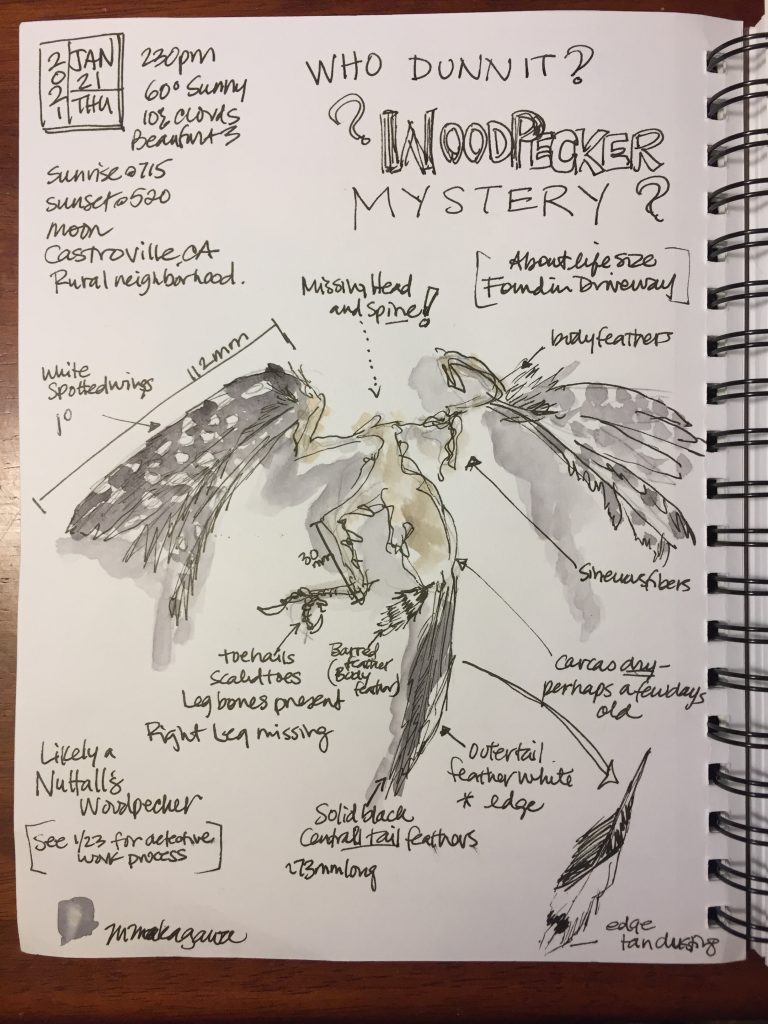
So, I sat in my driveway with the bird remains and nature journaled it, carefully noting what I could find.
A foot, a body feather, an interestingly patterned tail feather (which could be an important clue to ID), and took measurements of everything I could measure. I noted that there was no head nor spine! The skin on the body remained, and it was dried up, so not a recent kill.
I’m a pretty novice tracker so I posted this page on the Bay Area Tracking Club FB page where there are experts there that might give me some clues.
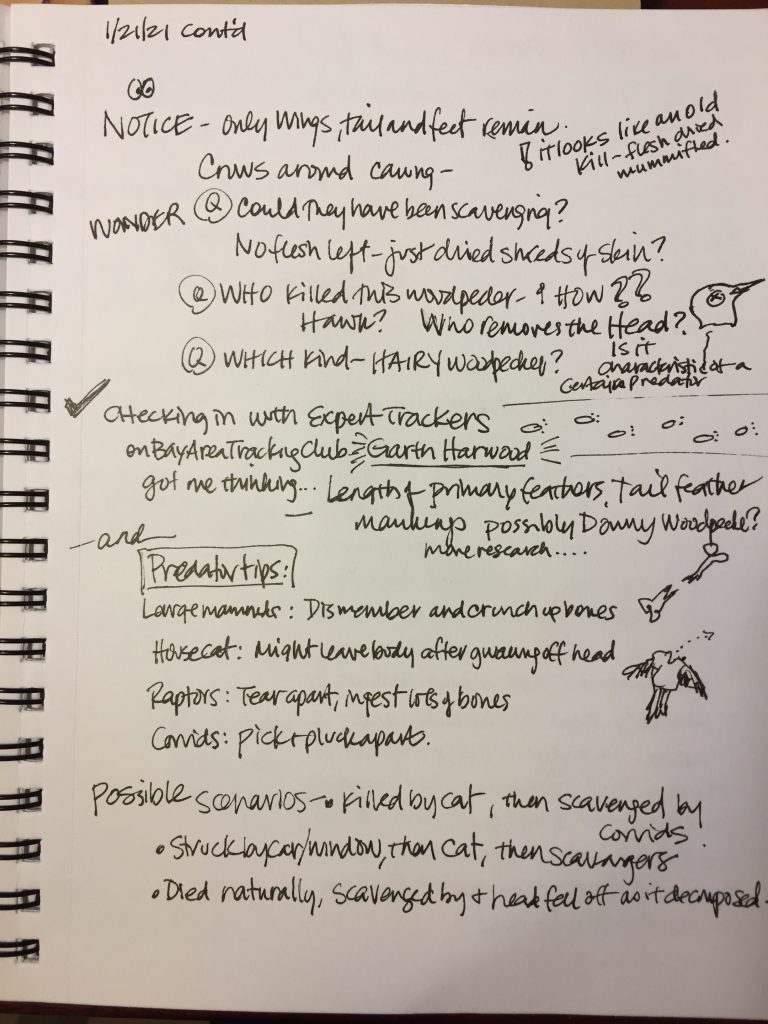
Garth Harwood in the Bay Area Tracking Club FB page responded with some great information about how predators eat their prey –which I wrote down in my journal, and attributed the source of the info.
He also had some great possible scenarios. This bird was likely killed by a cat ( perhaps after naturally dying or hitting a car or window), and later scavenged by crows/jays.
His thought that it might be a Downy woodpecker now shifted my attention.
Bird ID
I am a long-time bird watcher and can identify living birds in the field– but looking at this carcass I realized I had not really paid close enough attention to these particular details enough for ID.
I needed some help. So I used my favorite online resource for feather ID, the US Fish and Wildlife Feather Atlas. I looked at three different type of feathers.
1. Tail Feather
I looked at the three woodpeckers in my area that have spotted wing feathers–the Downy, Hairy and Nuttall’s. The tail feather was distinctive, so I looked at the tail feathers of the woodpeckers. The Atlas shows all the feathers with measurements. My feather looked closer to the Nuttall’s in pattern and length.
Downy: 5cm, Hairy 8cm, Nuttall’s 7cm. Mine was 6.6cm.
1 check mark for Nuttall’s based on length and pattern.
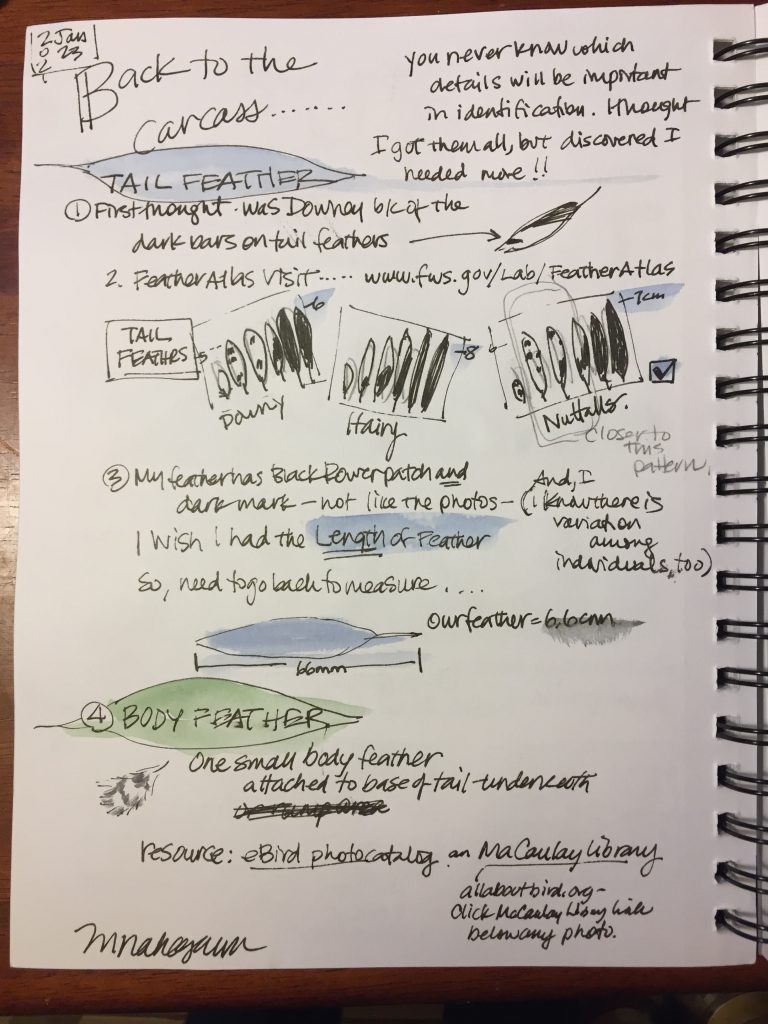
2. Body feather
I found two barred body feathers attached to the skin near the feathers. I looked at field guides and photo references to see which birds had barred (striped) feathers.
Downy and Hairy had clean feathers and the Nuttall’s has barred feathers! 2 checks for Nuttall’s!
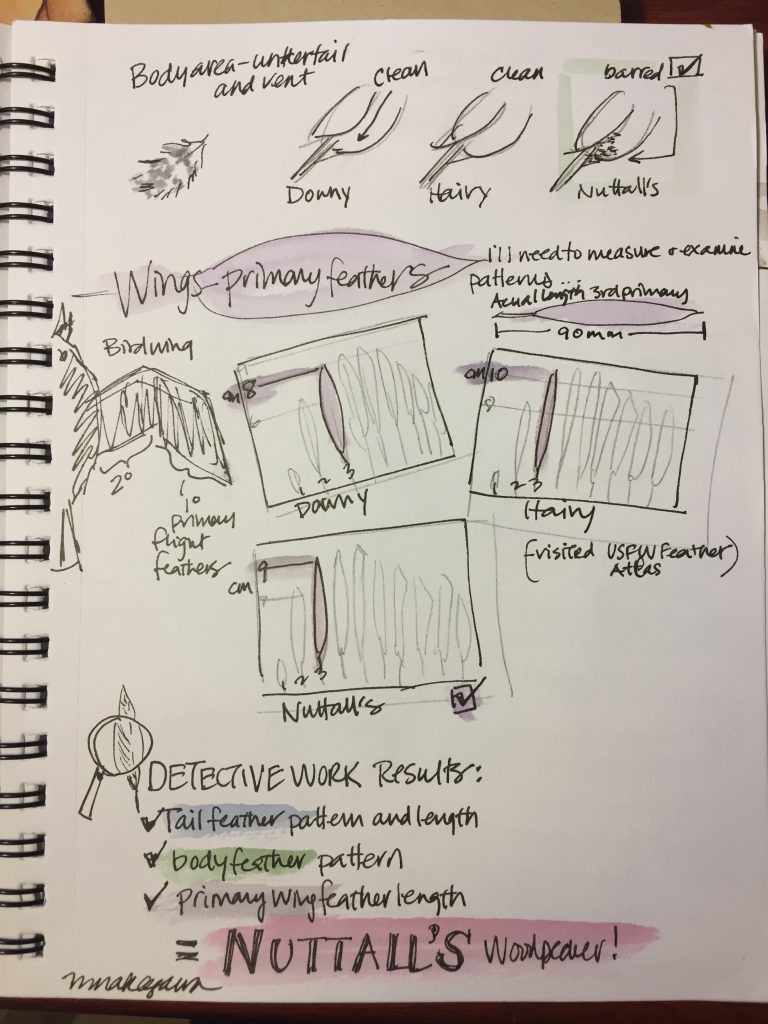
3. Primary wing feathers
I selected the 3rd Primary wing feather, measured it: 90mm.
Back to the feather atlas. Downy: 8cm, Hairy 10cm, Nuttall’s: 9cm!
3 checks for Nuttall’s.
Most likely a Nuttall’s woodpecker!
Based on the evidence I’d found, I have a high level of confidence that this is likely a Nuttall’s woodpecker.
But just like everything in science, I’m willing to change my ID if new evidence is presented that show it may be some other bird.
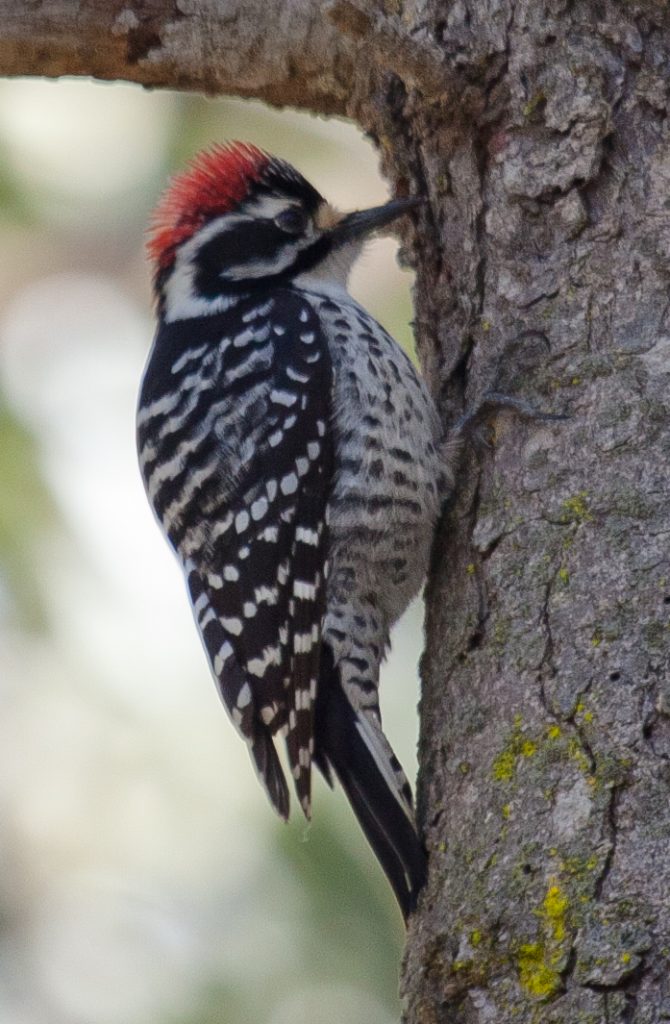
This makes it memorable
Because I was genuinely curious and delved into researching this, and discovered through my own observations, and I journaled this process, I am way more likely to remember these identification clues for much longer than had someone told me it was a Nuttall’s right off the bat.
These journal pages are an infographic, combining words, sketches and numbers to explain ideas about something.
Now, take your journal and use it to make your own discoveries in nature, and share!